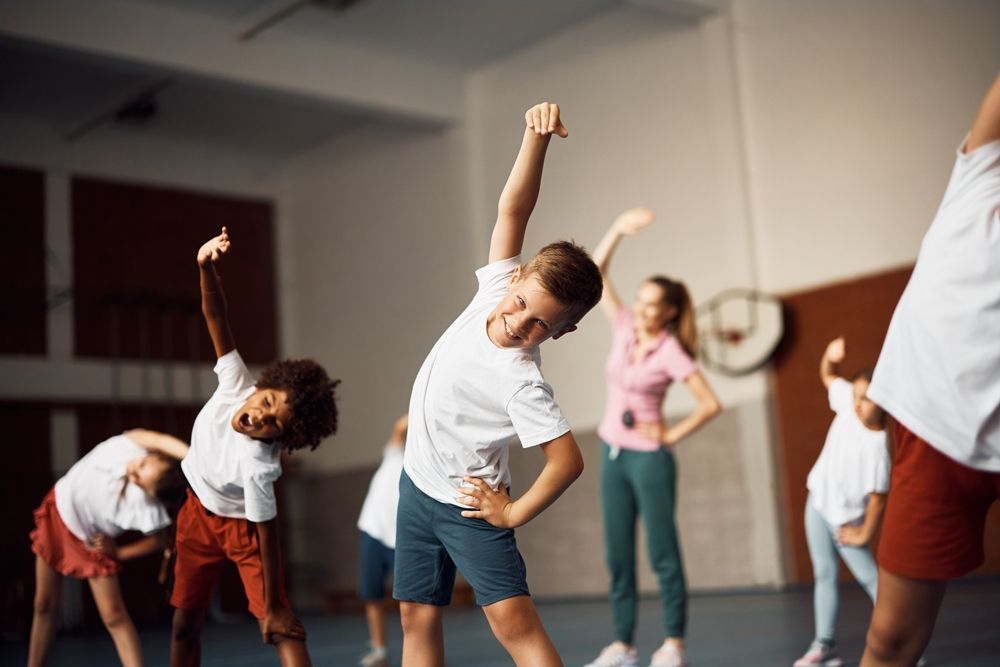Engaging in sports and physical activities is an integral part of a child’s development, promoting physical fitness, social skills, and a sense of teamwork. However, the thrill of the game comes with its own set of risks, as pediatric sports injuries are not uncommon. As parents, coaches, and healthcare professionals, it is crucial to understand the nuances of preventing and rehabilitating sports injuries in children. In this blog post from Let’s Grow Pediatrics, we will delve into effective strategies for both prevention and rehabilitation to ensure that young athletes can continue to enjoy the benefits of sports while minimizing the risk of injuries.
What Causes Pediatric Sports Injuries?
Understanding the most common ways pediatric sports injuries occur is paramount in developing effective prevention strategies. While children are resilient, certain factors contribute to their vulnerability on the field or court. One primary cause is overuse, where repetitive motions and excessive training without adequate rest lead to stress on growing bones and developing muscles. Lack of proper warm-up and cool-down routines also plays a significant role, as cold muscles are more prone to strains and injuries.
Additionally, improper techniques and body mechanics, often a result of insufficient coaching or supervision, can contribute to sports-related injuries in children. The competitive nature of youth sports can sometimes lead to overexertion and pushing beyond physical limits, increasing the risk of acute injuries.
Strategies For Preventing Sports Injuries
1. Proper Warm-up and Stretching: One of the fundamental aspects of injury prevention is a thorough warm-up routine. Children should engage in dynamic stretching and light aerobic exercises before diving into more intense physical activity. Warming up helps increase blood flow to the muscles, making them more flexible and less prone to strains and tears.
2. Age-Appropriate Training Programs: Tailoring training programs to the child’s age, developmental stage, and skill level is crucial in preventing injuries. Introducing age-appropriate exercises and gradually increasing the intensity helps the child’s body adapt to the physical demands of the sport without placing excessive strain on developing muscles and joints.
3. Proper Equipment and Facilities: Ensuring that children have access to well-maintained sports equipment and safe playing surfaces is paramount. Ill-fitting or outdated gear can contribute to injuries, so regular equipment checks and replacements are essential. Additionally, coaches and parents should advocate for safe playing environments that reduce the risk of accidents.
4. Hydration and Nutrition: Proper hydration and nutrition play a vital role in injury prevention. Children involved in sports should stay well-hydrated to support their overall health and aid in muscle function. A balanced diet rich in essential nutrients helps strengthen bones and muscles, reducing the likelihood of fractures and strains.
Rehabilitation Strategies
- Early Intervention: When a sports injury occurs, early intervention is crucial for successful rehabilitation. Prompt diagnosis and treatment help prevent the exacerbation of injuries and ensure a faster recovery. Seeking the expertise of a pediatric physical therapist is essential in developing an effective rehabilitation plan tailored to the child’s specific needs.
- Individualized Treatment Plans: Each child is unique, and so are their injuries. An individualized treatment plan, created in collaboration with healthcare professionals, considers the type and severity of the injury, as well as the child’s age and physical condition. This approach ensures that rehabilitation is both effective and safe.
- Gradual Progression: Pushing a child too hard, too soon, can lead to setbacks and re-injury. Gradual progression is key in pediatric sports rehabilitation. Physical therapists work closely with young athletes to establish achievable milestones, gradually increasing the intensity of exercises and activities as the child’s strength and flexibility improve.
- Incorporating Play and Fun: At Let’s Grow Pediatrics, we believe in Incorporating play into therapy sessions helps motivate children to actively participate in their recovery. Our dedicated therapists use games and activities that mimic sports movements to make the rehabilitation process enjoyable while achieving therapeutic goals.
- Family and Coach Involvement: Successful rehabilitation is a collaborative effort that involves not only the child and healthcare professionals but also parents, coaches, and teachers. Educating them about the importance of following the rehabilitation plan and providing support throughout the process ensures a holistic approach to the child’s recovery.
Pediatric sports injuries are a reality, but with the right preventive measures and effective rehabilitation strategies, children can safely participate in sports and reap the numerous benefits they offer. By emphasizing proper warm-up, age-appropriate training, and early intervention, we can create an environment that fosters both the physical and emotional well-being of young athletes. Remember, the goal is not only to heal from injuries but also to instill a lifelong love for physical activity and healthy living in our children.
Let’s Grow Pediatrics Is Your Pediatric Physical Therapy Expert in Edmond
At Let’s Grow Pediatrics in Edmond, OK, we are dedicated to nurturing and enhancing children’s gross motor skills. Our pediatric physical therapy programs are designed to cater to the unique needs of each child. We create a supportive and fun environment where children can explore their physical abilities, overcome challenges, and build confidence.
Our expert therapists use a range of activities, exercises, and play-based interventions to target specific gross motor skill areas. Whether it’s improving balance, coordination, strength, or mobility, we work closely with children and their families to set achievable goals and track progress. Call us today at 405-562-3485.


